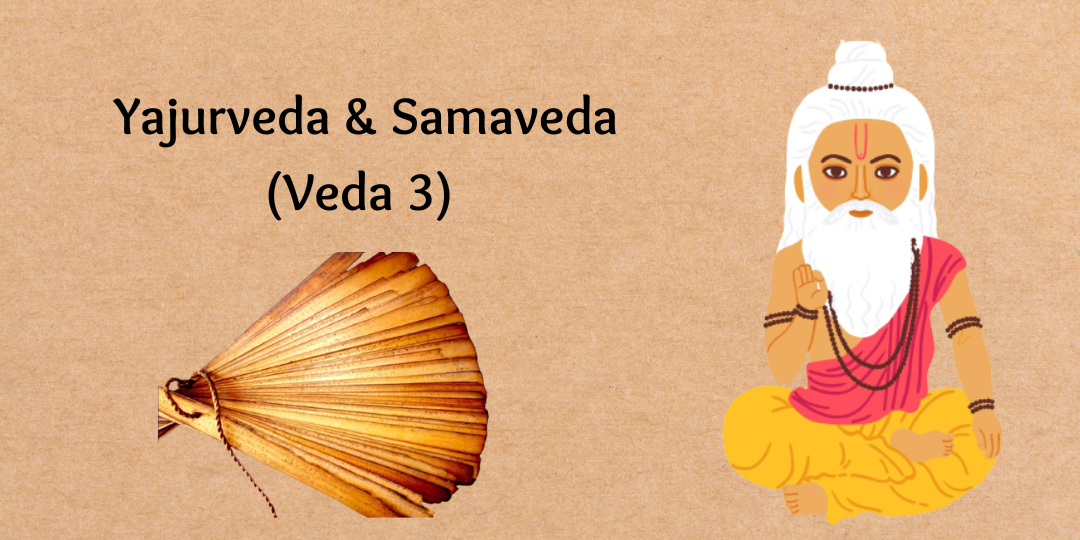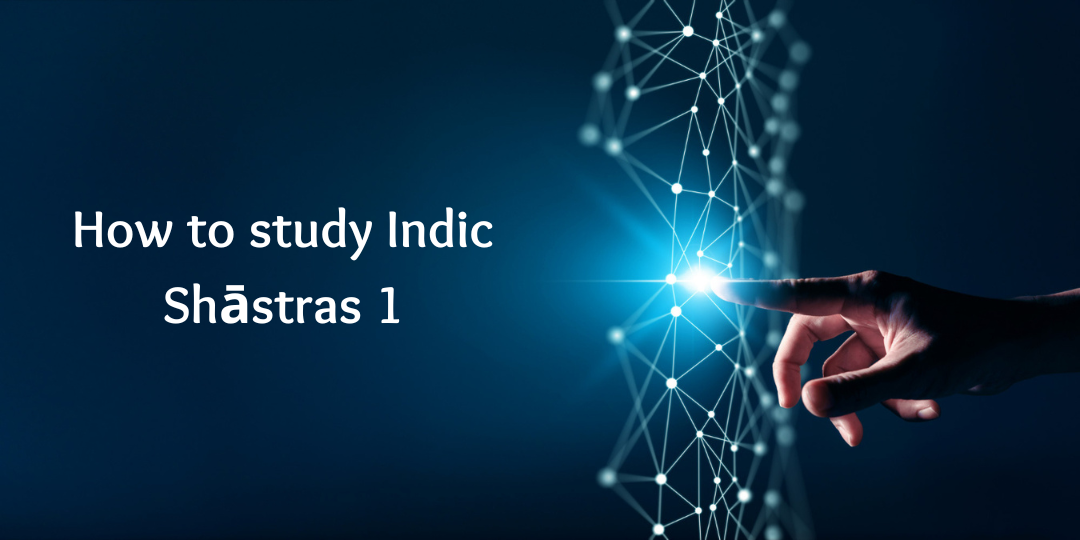Yajurveda & Samaveda (Veda 3)
₹5,400.00 (+ 3.5% online fee)
General Information about the curriculum
The content and purpose of Yajurveda and Samaveda in the Vedic tradition is very closely related to the practice of Yajna, usually referred to as ritual sacrifice. Yajurveda elucidates the governing principles of operation or execution of Yajna while the Samaveda provides the musical enchantment that draws the attention of the Devatas and brings them close to their beneficiaries. This course is designed to explore the features of these two Vedas and their related intricacies. Completion of MAM101 – Introduction to Vedas is preferable before enrolling into this course
Course objectives
To provide an introduction to Yajurveda and Sāmaveda and to provide illustrations of the mantras of the Saṁhitā, Brāhmaṇa, Āraṇyaka and Upaniṣads of the two Vedas
Course outcomes
At the end of the course the learner will be able to –
- Comprehending the structure and classification of Yajurveda and Samaveda
- Understanding the content and purpose of practice of Yajurveda and Samaveda in the Vedic way of life
- Comparing the structural and content based divergences among the different internal classification of Yajurveda and Samaveda through perusal of illustrations
Curriculum
Module I
Yajurveda and Sāmaveda introduction:
- Features of Yajurveda and Sāmaveda
- Internal classification of the Yajurveda and Sāmaveda into Saṁhitā, Brāhmaṇa, Āraṇyaka and Upaniṣad
Module II
Yajurveda and Sāmaveda – Saṁhitās & Brāhmaṇas – Illustrative:
- Selection of Yajus-saṁhitā & Sāma-saṁhitā for reading
- Selection of Yajur-brāhmaṇa & Sāma-brāhmaṇa for reading
Module III
Yajurveda and Sāmaveda – Āraṇyakas & Upaniṣads – Illustrative:
- Selection of Yajur-āraṇyaka & Sāma-araṇyaka for reading
- Selection of mantras from Taittarīya-upaniṣad (Śīkṣāvallī) and Chāndogya-upaniṣad
Practical structural setup
| Sr. No. | Title of Practical activity | No. of Activities |
| 1 | Reading Comprehension: Reading history of Vedic literature pertaining to the topics – Yajurveda and Samaveda | 2 |
| 2 | Listening skills: sections of at least two types of mantras among Saṁhitā, Brāhmaṇa, Āraṇyaka and Upaniṣad and list the differences | 1 |
| 3 | PowerPoint Presentation – Compare and contrast the svara structure in Yajurveda and Samaveda | 1 |
| 4 | Write a monograph on the svaras in Samaveda | 1 |
| 5 | Group discussion – briefing of contents of the different Upanishads of the Yajurveda and Samaveda | 1 |
| 6 | Dyadic Communication – Face to Face Conversations – The significance of Yajna as a central Vedic concept | 1 |
| 7 | Self-study and understanding of – An overview of concentration of Yajurvedins and Samavedins in Bharata and how they are propagating learning of the Vedas in the given situation | 1 |
| Total | 7 |
Evaluation & Assessment Methods Used
Formative Assessment:
- Continuous Evaluation (Mid Term Examination & Continuous Assessment)
- 40% weightage: 40 marks
- Formative Assessment will be based on a continuous comprehensive pattern
- There shall be a Mid-term examination of 1 marks, including 10 marks for theory and 05 marks for practical
- There shall be an assignment, library work, surprise class test and lecture attendance each of 5 marks for Theory and practical journal and practical attendance each of 5 marks for practical as continuous assessment components
Summative Assessment:
- End Term Examination
- 60% weightage: 60 marks
- Question paper Pattern
- 2 Marks x 10 Questions = 20 Marks (Short Answers)
- 5 marks x 4 Questions = 20 marks (paragraph Answers)
- 10 Marks x 2 Questions = 20 marks (Essay Answers)
- Question paper Pattern
- There shall be an End-term examination of 60 marks, including marks for theory and 30 marks for practical
Formative Evaluation-The answer sheet of the formative examination will be shown to individual students, and the student will be guided on how to improve upon the performance.
Summative Evaluation – The end term examination shall be conducted as per the university examination schedule. The papers, for both Theory & Practical, shall be assessed by the teacher who teaches the course.
References
- Devi Chand, The Yajurveda, Sanskrit text with English Translation, 1980
- Selection of reference to be based on portion selected
Indic Knowledge Landscape
Credits 2 (L-T-P 2-0-0, Lecture 30 hours)
Why should you attend?
If you are curious to know whether there is an indigenous knowledge in India and its diversity and spread of coverage, this course is for you. It will demystify the various sources from vedas to folklore encompassing Indian culture in just 30 hours. You will get to know what is the subject matter of the Vedas, Upanishads, Shastras, Puranas etc., in a way you can relate to modern knowledge.
Course Objectives
To introduce learners to the landscape of Vedic literature with broad taxonomy of Indic knowledge systems.
Learning Outcomes
- Knowledge of the sources of Vedic knowledge
- Comprehension of the seamless nature of Vedic knowledge
- Understand the purpose and utility of Vedic knowledge systems in enriching human life
Indic Reasoning and debating
Credits 2 (L-T-P 2-0-0, Lecture 30 hours)
Why should you attend?
Have you ever felt that something you read on social media does not make any logical sense but do not know why? Have you felt the need to win arguments with friends regardless of their motive of argument? Did you know that there are sixteen types of mistakes one can commit and you can counter any opponent in a debate by learning India’s celebrated science of debate?
If so, this course is for you. It will make you appreciate why India was the capital of knowledge and debates for millennia and why people came from all over the world to study here. This course will introduce Tarka – The Indian logic system and methodology of structured debate.
After completing this course you can exactly pinpoint fallacies in social media arguments.
Course Objectives
- Ability to make use of debate exchanges and definitions and classification systems drawn from Indic manuals, learners understand the systematic process to challenge and defend assertions made in the course of debate.
Learning Outcomes
Learner transforms into a persuasive communicator with ability to-
- Defend statements using clear, logical reasons
- Choose relevant statements to defend
- Support the arguments with well-chosen evidence, which is explanatory and thoroughly analyzed
The structure and method of Indic shastras
Credits 2 (L-T-P 2-0-0, Lecture 30 hours)
Why should you attend?
Did you know that India is unique in having a science of how to do scientific enquiry? All Indian sciences follow a standard template that enables the systematic mining of Indic texts. If you know this template you can understand any shastra(Indic sciences) easily. It also helps in artificial intelligence where knowledge representation is crucial.
Course Objectives
To understand the exposition style common to all Indian Shaastras or scientific treatises. This throws light on Bhaaratiiya method of scientific discourse.
Learning Outcomes
- Ability for independent study of Indic shaastra texts to explore contemporary relevance
- Ability to navigate Indic texts for concept search and knowledge mining applications
- Ability to paraphrase Indic shaastra content to novice mainstream-educated audience
Vedic human psychology
Credits 3 (L-T-P 3-0-0, Lecture 45 hours)
Why should you attend?
Who does not want to be happy all the time? But we are constantly surrounded by things that make us unhappy. What is in us that causes grief. Is it the outside circumstance or something in us that responds? Who am I? How Many Grades of Happiness exist? Why do I like some things and do not like others? How to help others in distress?
The answer to all these questions was the central pursuit of India for millenia. India offers the most comprehensive understanding of human nature that is central to all aspects of human life. This course gives you the essence of this knowledge without overwhelming you with the details.
It unifies spirituality, religion, psychology, aesthetics by enunciating their common underlying principles.
Course Objectives
To give a basic understanding of human psychology and the motives of human behavior. To serve as the foundation for all humanities disciplines. This course integrates several western models of psychology with a common taxonomy derived from Vedic perspective. It also introduces a novel Vedic model derived from several Vedic sources including Upanishads, Sankhya-Yoga, Tantra, Bhaagavatam, Jyotisha, Natyashaastra and Mimaamsa.
Learning Outcomes
After completion of this course students will be able to
- Comprehend the basic meaning & nature of western psychology
- Compare and contrast various paradigms of western psychology
- Understand and evaluate various fundamental concepts of Vedic psychology
- Juxtapose western and Vedic understanding of human personality
- Diagnose various psychological issues and create an intervention plan by integrating western and Vedic principles
Scientific thinking
Credits 2 (L-T-P 2-0-0, Lecture 30 hours)
Why should you attend?
Modern-day parents want their children to imbibe scientific thinking and be innovators in whatever area they choose to pursue. However, today’s school education system focuses on informing the findings of science but not the method of scientific thinking and model-based reasoning in a formal way. This course hones three key skills of scientific thinking, namely, abstraction, classification and inference essential to become a creative scientist.
This course introduces India’s science of building scientific models and analyzing the soundness of any theory. It helps one become a discerning scientist and appreciate scientific works better.
Course Objectives
To elucidate the fundamental aspects of knowledge, its creation, its process and the method of scientific inquiry. To introduce the Navya Nyaya approach of model building.
Learning Outcomes
After the completion of this course students will be able to
- Understand Model based reasoning as the method of all scientific inquiry
- Assess the robustness of scientific models according to criteria laid out in Vedic scientific system
- Build robust scientific models for use in simulating real world systems
- Recontextualize Vedic shaastras as scientific models for a contemporary application.





